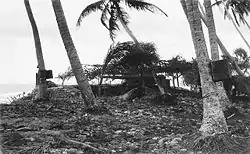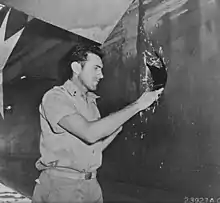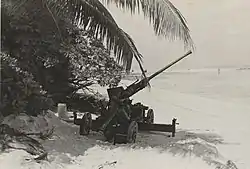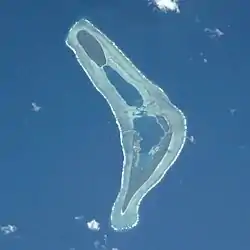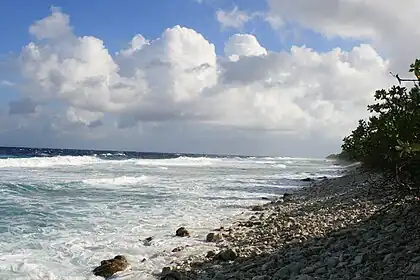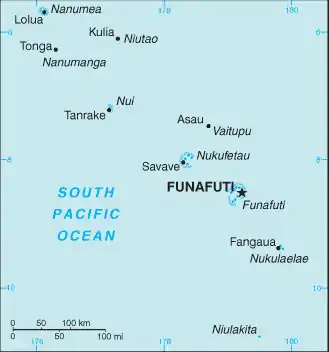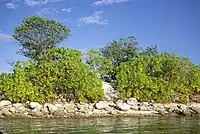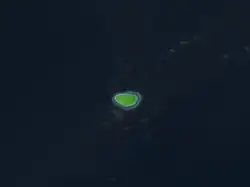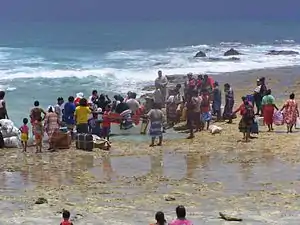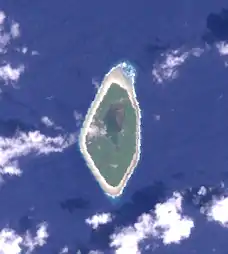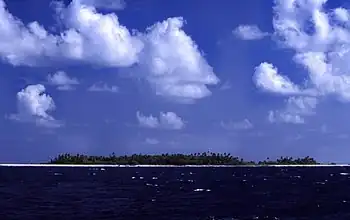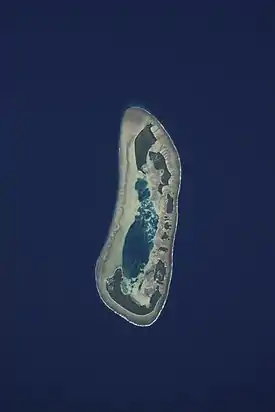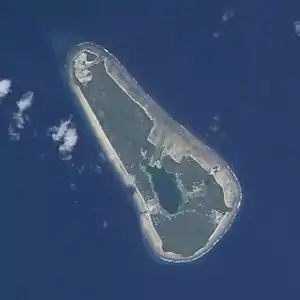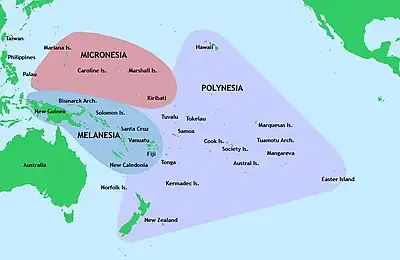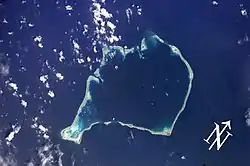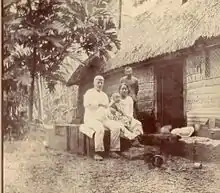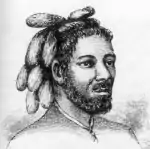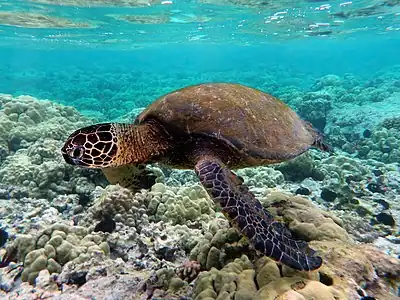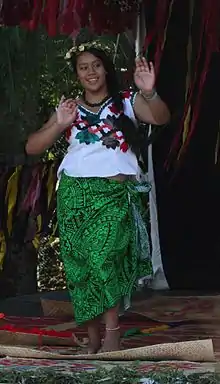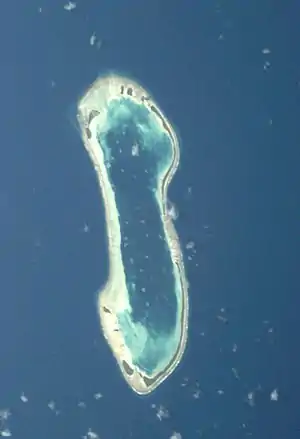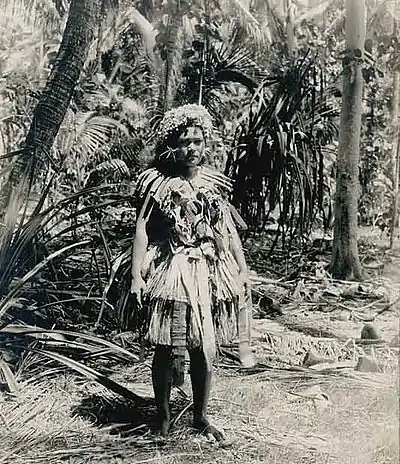The Tuvalu PortalA beach at Funafuti atoll, Tuvalu, on a sunny day
Tuvalu (/tuːˈvɑːluː/ ⓘ too-VAH-loo), formerly known as the Ellice Islands, is an island country in the Polynesian subregion of Oceania in the Pacific Ocean. Its islands are situated about midway between Hawaii and Australia. They lie east-northeast of the Santa Cruz Islands (which belong to the Solomon Islands), northeast of Vanuatu, southeast of Nauru, south of Kiribati, west of Tokelau, northwest of Samoa and Wallis and Futuna, and north of Fiji. Tuvalu is composed of three reef islands and six atolls. They are spread out between the latitude of 5° and 10° south and between the longitude of 176° and 180°. They lie west of the International Date Line. The 2017 census determined that Tuvalu had a population of 10,645, making it the second-least populous country in the world, behind Vatican City. The total land area of the islands of Tuvalu is 26 square kilometres (10 sq mi). The first inhabitants of Tuvalu were Polynesians, according to well established theories regarding a migration of Polynesians into the Pacific that began about three thousand years ago. Long before European contact with the Pacific islands, Polynesians frequently voyaged by canoe between the islands. Polynesian navigation skills enabled them to make elaborately planned journeys in either double-hulled sailing canoes or outrigger canoes. Scholars believe that the Polynesians spread out from Samoa and Tonga into the Tuvaluan atolls, which then served as a stepping stone for further migration into the Polynesian outliers in Melanesia and Micronesia. In 1569, Spanish navigator and documentor Álvaro de Mendaña became the first European to sail through the archipelago, sighting the island of Nui during an expedition he was making in search of Terra Australis. The island of Funafuti was named Ellice's Island in 1819. Later, the whole group was named Ellice Islands by English hydrographer Alexander George Findlay. In the late 19th century, Great Britain claimed control over the Ellice Islands, designating them as within their sphere of influence. Between 9 and 16 October 1892, Captain Gibson of HMS Curacoa declared each of the Ellice Islands to be a British protectorate. Britain assigned a resident commissioner to administer the Ellice Islands as part of the British Western Pacific Territories (BWPT). From 1916 to 1975, they were managed as part of the Gilbert and Ellice Islands colony. (Full article...) Selected articles -Selected picture -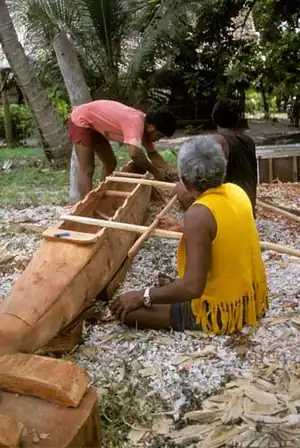 Canoe carving on Nanumea Paopao outrigger canoes are still constructed today such as this one being carved on Nanumea. During pre-European-contact times there was frequent canoe voyaging between the islands as Polynesian navigation skills are recognised to have allowed deliberate journeys on double-hull sailing canoes or outrigger canoes.
CategoriesTuvalu · Island countries ·
Polynesia ·
Category puzzle Tuvalu Tuvalu-related lists Buildings and structures in Tuvalu Tuvaluan culture Economy of Tuvalu Education in Tuvalu Environment of Tuvalu Geography of Tuvalu Government of Tuvalu Health in Tuvalu History of Tuvalu Organizations based in Tuvalu Tuvaluan people Politics of Tuvalu Society of Tuvalu Tuvalu stubs General images -The following are images from various Tuvalu-related articles on Wikipedia.
Did you know (auto-generated)
Related portalsMore did you know DYK Question Mark Right
WikiProjectsWikiProjects WikiProject Tuvalu
WikiProject Polynesia
Things to doThis list is transcluded from the tasks list page, to edit, click here
WikimediaThe following Wikimedia Foundation sister projects provide more on this subject:
Discover Wikipedia using portals
| ||||||||||

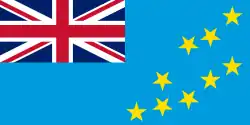
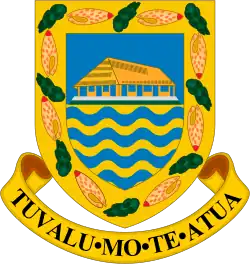
.svg.png.webp)

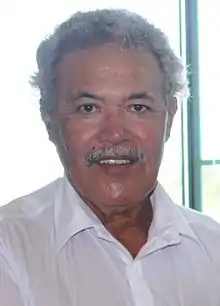
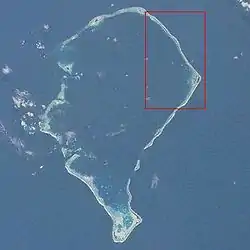

.jpg.webp)
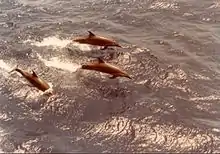
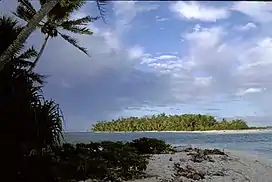

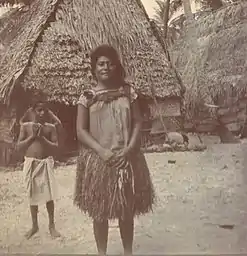

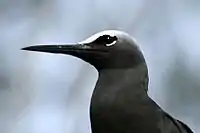

.jpg.webp)
_(14765813295).jpg.webp)



